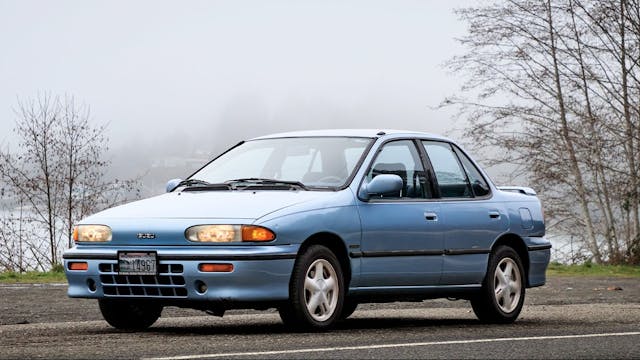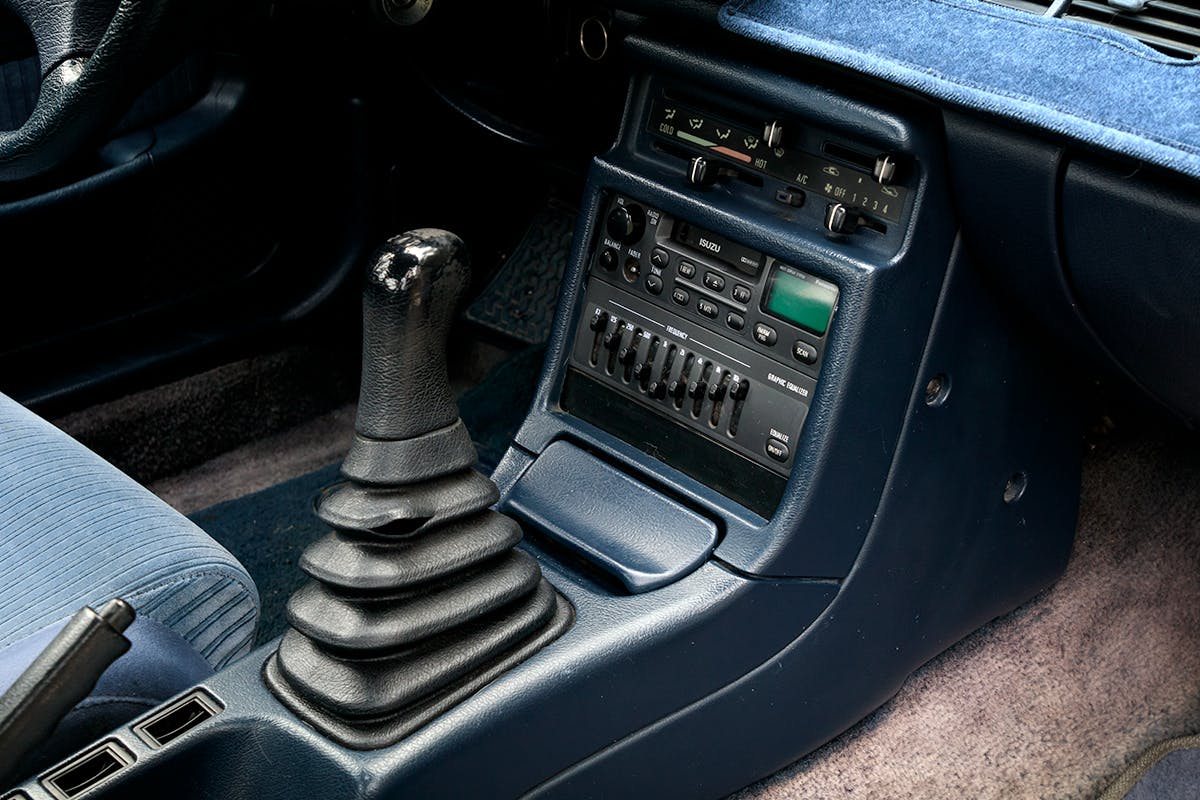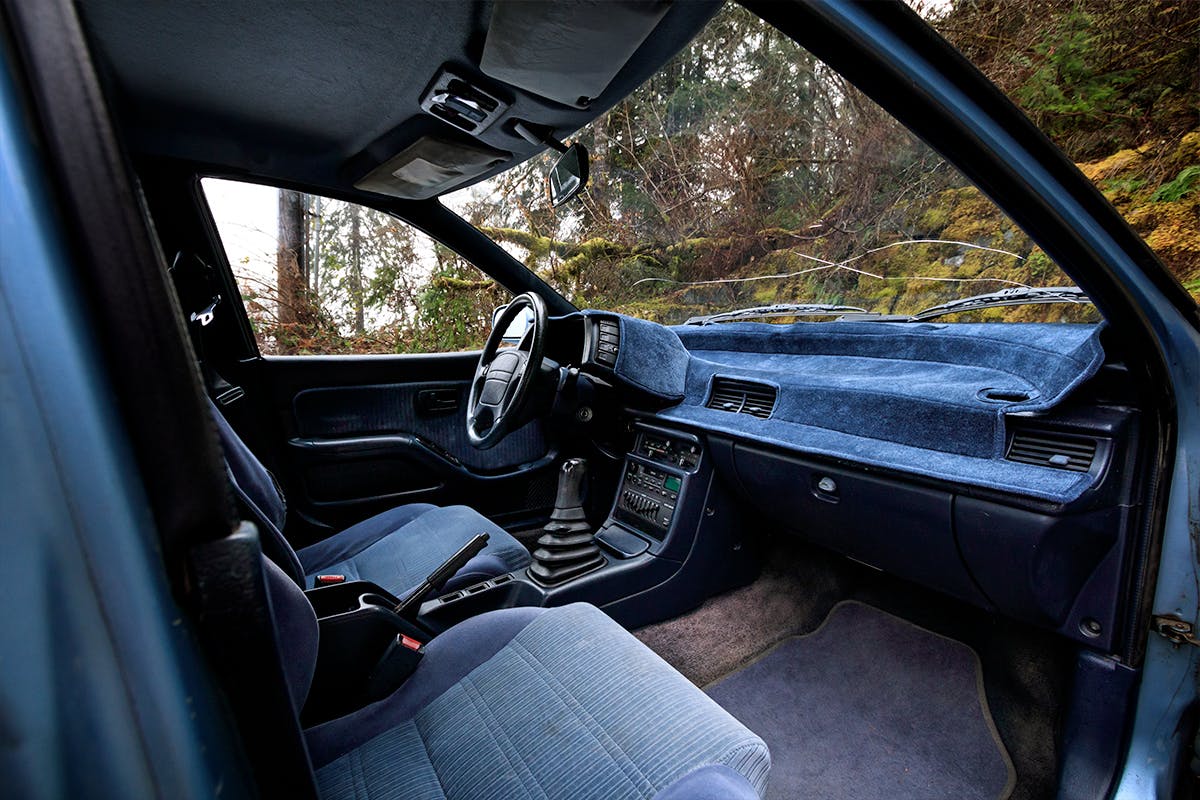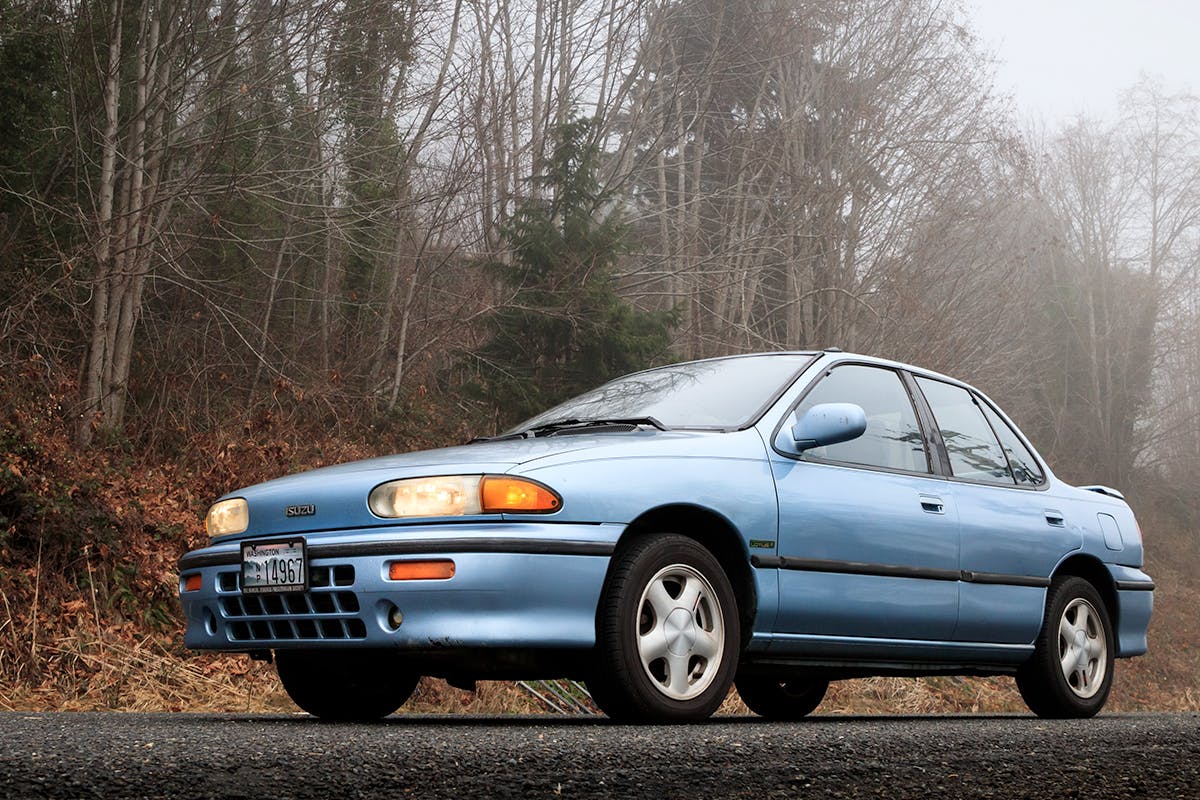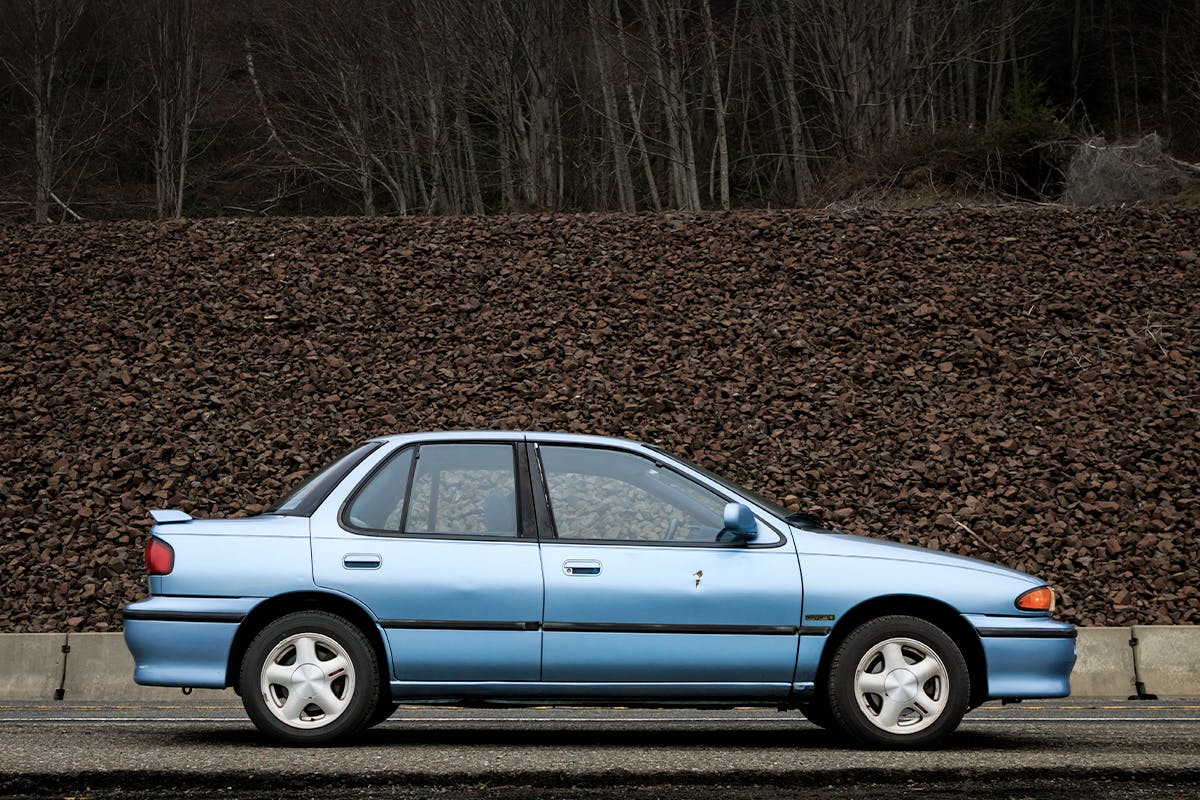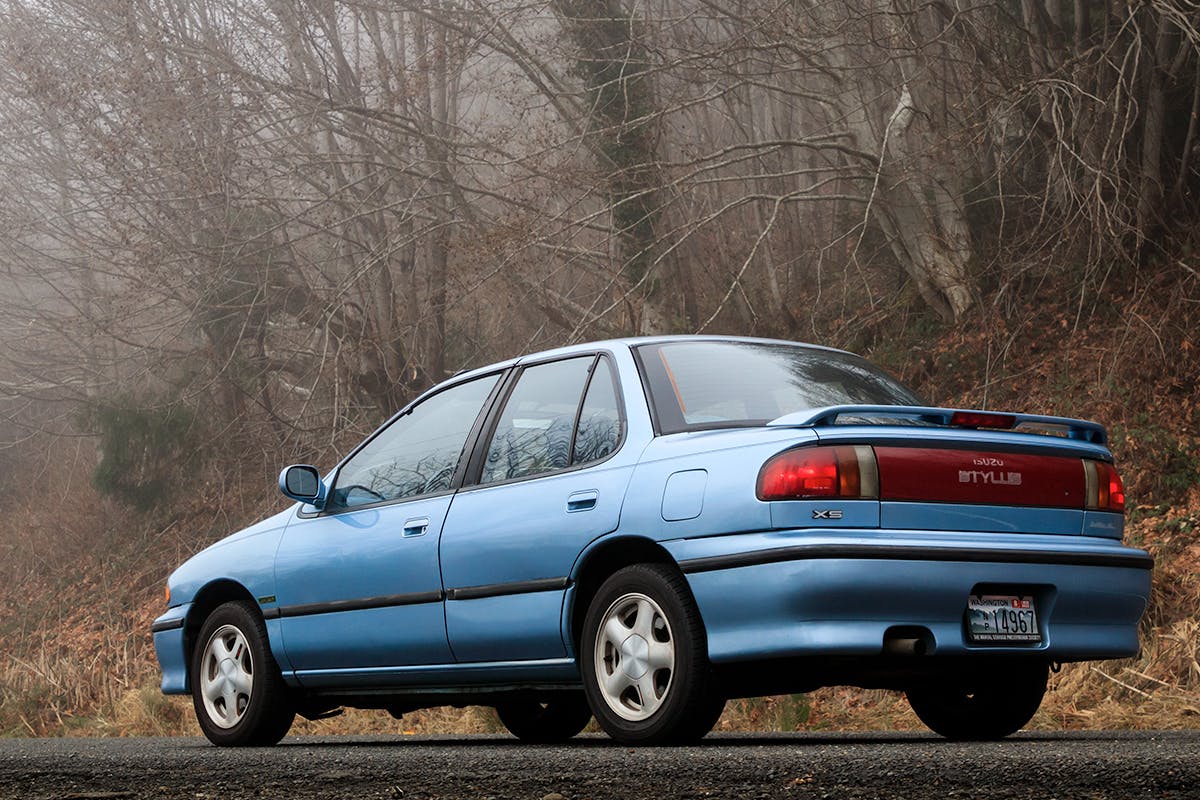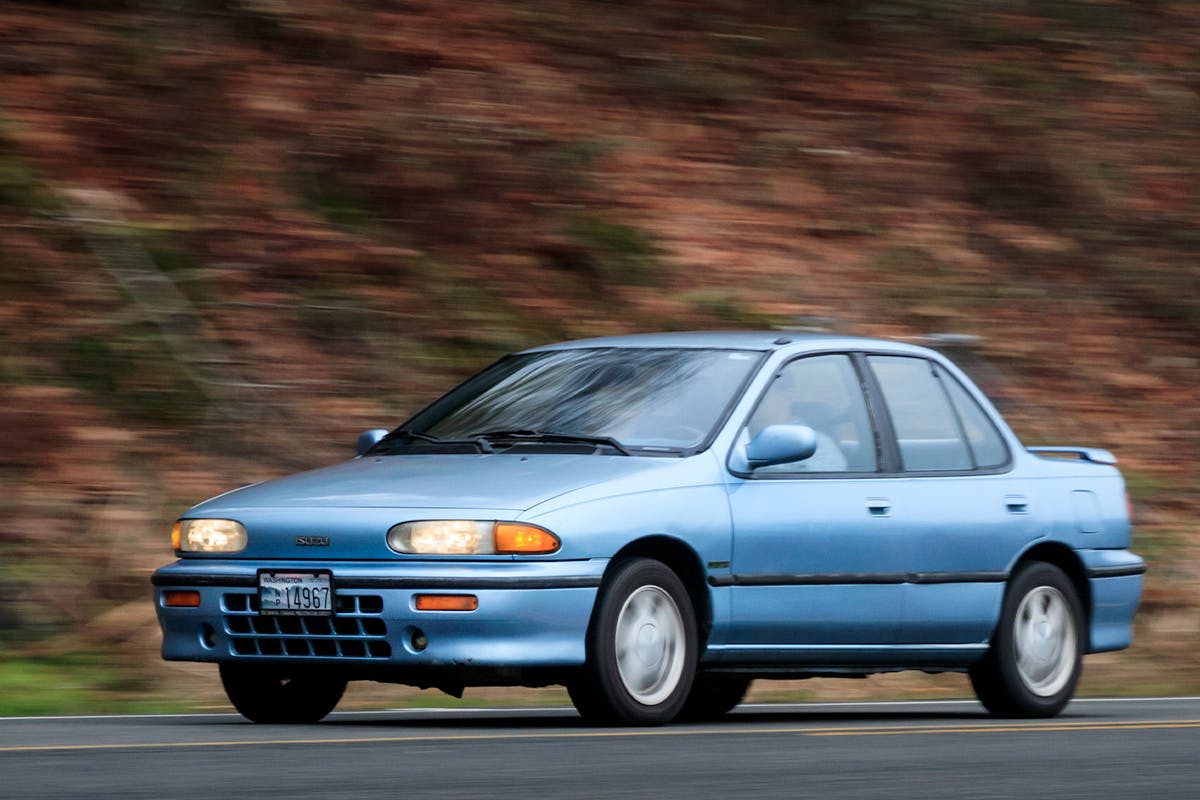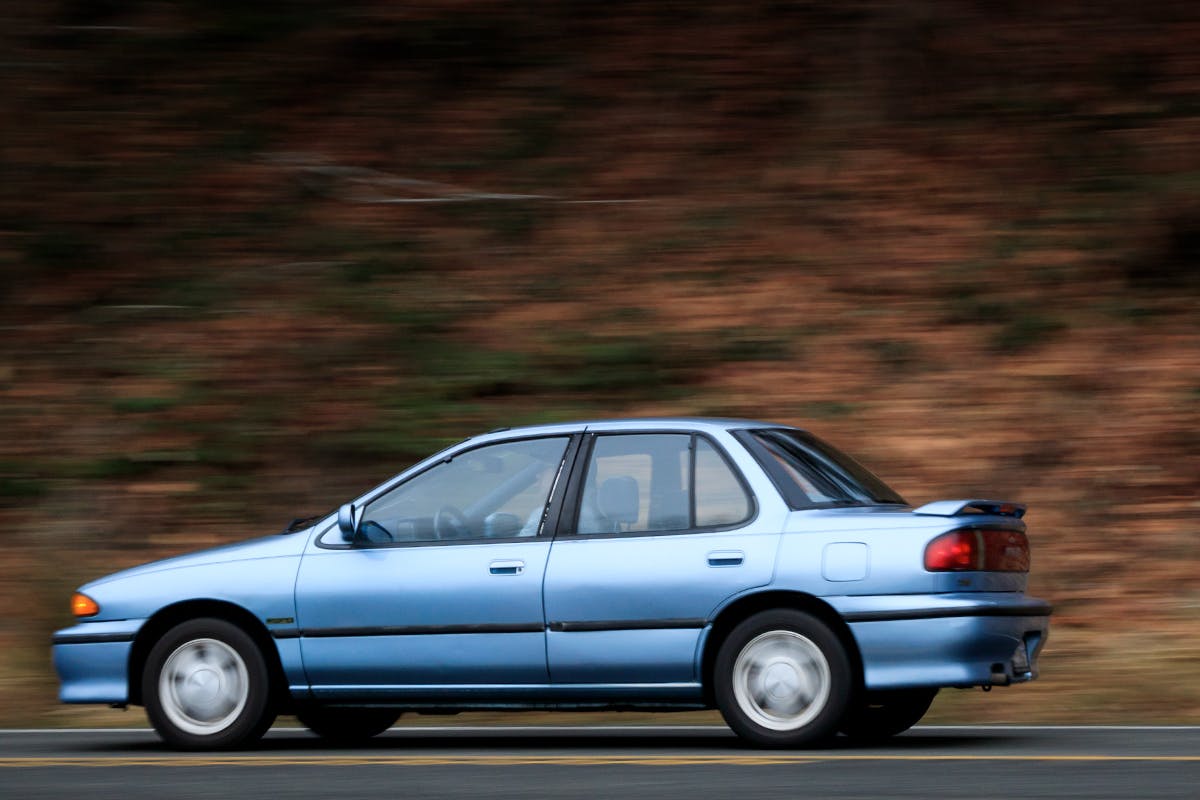Driven to XS: Living the weird car life with an Isuzu Stylus
If you’ve never seen an Isuzu Stylus, you’re not alone. Just 17,754 of them—less than a month’s worth of Honda Civic production at the time—were sold in America from 1990 to 1993. It ended up being Isuzu’s final truly home-grown car and the last one it sold in the U.S. This ignominious end, however, didn’t have much to do with the compact sedan itself.
Frisky and fun, the Stylus is a treat to drive, particularly the XS and even-rarer RS versions, with their Lotus-tweaked suspensions and high-revving twin-cam fours. It looked cool too, wrapped in an organic, futuristic 1990s shape. These virtues, however, just weren’t enough to overcome Isuzu’s tiny U.S. dealer network, off-brand image, and poor timing that coincided with the bursting of the Japanese economic bubble.
Redemption may have come for the Stylus, though. What new-car buyers ignored back then draws lots of eyes today, both at shows and in online car communities. The Stylus offers the same combination of mechanical goodies and analog fun as Sentra SE-Rs and 16V Jettas, but it was never common enough to become familiar. Especially for an obscure Japanese performance machine with connections to Lotus, it’s also practical and affordable, though living with one demands commitment.
Gemini, Saturn, and GM’s international satellites
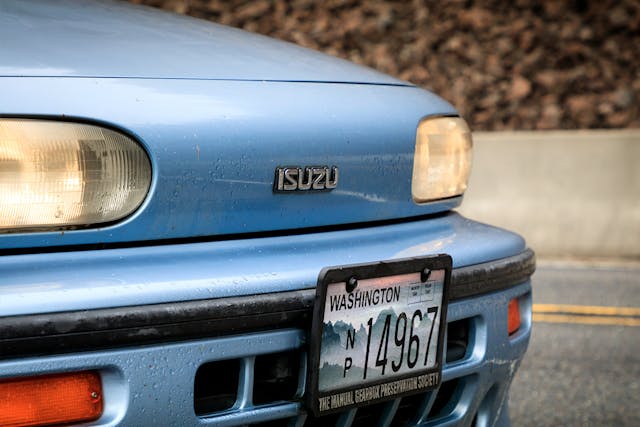
Designed in late 1980s Japan, the Stylus (called the Gemini at home) went into production right as the economic situation in that country nosedived. The car was nothing if not ambitious, created by leveraging some of General Motors’ best international talent. As such, its story is intertwined with those of three other disparate GM fiefdoms: Saturn, Geo, and Lotus.
Isuzu had been a GM partner since 1972, so it was natural that the company’s designers would collaborate with Detroit. Future Isuzu and Nissan Design boss Shiro Nakamura spent most of 1985 at GM’s Warren, Michigan, Design Center working with soon-to-be GM design VP Chuck Jordan and designers like Kip Wasenko, among others. He then returned to Japan to work on the Mk3 Gemini/Stylus.
Ideas cross-pollinated. Early 1985 saw a major design contest for the future of Saturn, in which concepts by Wasenko’s team got the nod. While the Stylus isn’t entirely a cast-off Saturn as sometimes reported, there’s a strong resemblance to a rejected sedan prototype by designer Phil Garcia. Thanks to that big heckblende, from behind it also looks a bit like the production Saturn SL2.
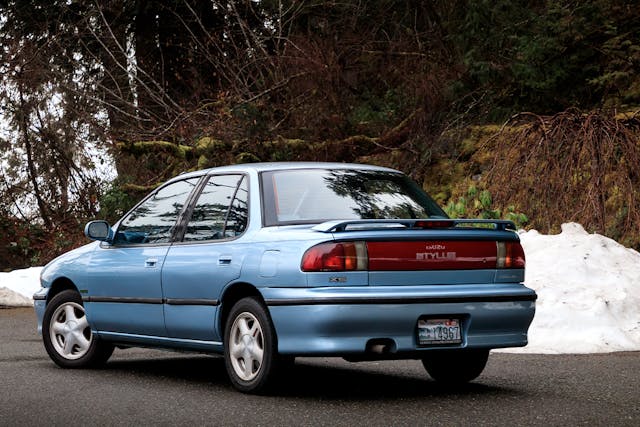
From 1986–88, Jordan and other GM designers were frequent visitors to the Isuzu studio in Fujisawa. Their main role was to weigh in on behalf of North American interests, because the Gemini/Stylus would be a captive import for American Chevrolet dealers, just as the previous version sold as the Chevrolet Spectrum.
Along with the sedan, there would also be coupes, replacing the three-door Geminis and the aging rear-drive Impulse. These became the Geo Storm and the Mk2 Isuzu Impulse. Jordan himself directly collaborated on their designs, but only the Storm ultimately made it to Chevy showrooms. The Stylus/Gemini grew longer and wider than before, positioning it too close to the Corolla-based Geo Prizm for GM’s comfort.
The final Stylus shape was comely, futuristic, and more than a little polarizing. As Isuzu designer Seiji Emoto told the Japanese media, “We do not expect everyone to like it.” The mechanical package, however, was hard not to love.
Sixteen-valve pocket rockets
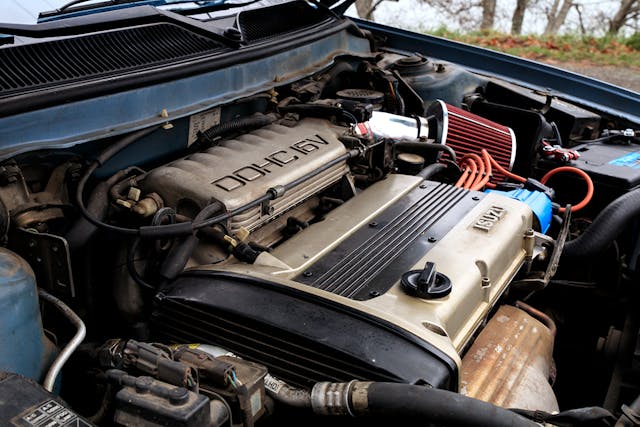
Fans of light, small, “pocket-rocket” sedans (think MkII VW Jetta GLI 16V, Geo Prizm GSi, and Peugeot 405 Mi16) can appreciate exactly what Isuzu was going for with the Stylus, which bowed in the fall of 1990. Despite the fact that the base-model Stylus used a mere 95-horsepower single-cam four, and JDM Geminis got workaday diesels, the car’s personality centered squarely on fun.
The 2500-pound XS model ratcheted up the performance, motivated by an eager and raucous 130-hp, 1.6-liter twin-cam four. It boasted a 7700-rpm redline and a short-geared five-speed. 1992 brought the even hotter RS, with a 1.8-liter, 140-horse sixteen-valver. Japanese buyers could get a 160-horse turbo as well as special versions breathed on by German tuner Irmscher. These JDM Geminis could also be ordered with all-wheel drive—all the better to compete with rival Subaru, though AWD only made it stateside on the Impulse.
Isuzu’s own engineers came up with the car’s Nishiboric passive four-wheel steering system (in which the rear toe angle changes with the rear suspension’s travel), but to finely tune the handling the company turned to another familiar GM satellite, one with a reputation for excellence: Lotus.

The “handling by Lotus” badges, seen earlier on the I-Mark and Impulse, may seem gimmicky but the result was not. Lotus modified the shock damping, springs, stabilizer bars, and even the trailing arm locations on the Gemini/Stylus. The tweaks produced a car that performed much like the VW Jetta GLI and far pricier Peugeot 405 Mi16. Lotus borrowed from Isuzu in return, using the Gemini’s twin-cam and five-speeder for the Elan M100’s drivetrain.
None of this impressed buyers, to whom Isuzu’s marketing team preferred to stress value rather than sportiness. While reviews were positive and initial sales brisk—some 10,000 cars in the first year—U.S. sales fell to 4670 in 1992 despite the introduction of the RS. Though a big name in SUVs, Isuzu was a small fry in the JDM car market in particular , where it was taking heavy losses. After months of speculation, Isuzu announced that December that in-house car production would cease in 1993.
From zero to hero

Overlooked and undervalued when new, surviving Stylii (just go with it) are vanishingly rare today. According to IHS Markit, just 131 of them were registered nationwide in 2021. They’re not worth much, but in the age of quirk-obsessed inquisitive online car communities and rampant nostalgia for the 1980s and ’90s, their unconventional style, fun-to-drive nature, and sheer rarity have all the elements of Cars & Coffee royalty.
Last year, a Stylus XS drew in owner Miles Wenzel. After sometimes finding his 10th-Anniversary Mazda Miata overlooked in a sea of MX-5s at events, its off-beat personality and practicality won him over. “I had my Miata and an El Camino, but I wanted something more unusual to take to events like Radwood and a car that had room for my kids.” With the prices of even project cars soaring and more established JDM imports costing a minimum of $8000–$12,000, he stumbled on the Isuzu via a friend’s recommendation.
“There’s a small but very supportive community behind Isuzus,” Wenzel says, “which was part of the appeal. If I get stuck, they’re happy to help,” The $1000 car was a runner, to be sure, but Wenzel has since relied on the Isuzone.org group’s knowledge to help fix a variety of maladies.
The car stands out everywhere it goes and received a large share of online attention after appearing at last year’s Radwood PNW event. “There are enthusiasts who are genuinely interested in things we don’t see often or have never seen,” Wenzel says, a view validated by the popularity of Facebook groups like Obscure Cars For Sale, Underappreciated Survivors, and the WeirdCarTwitter universe, to which Wenzel is a frequent contributor.
In these venues, formerly unsung cars are stars in part because they are more accessible than suddenly-$130,000 Porsche 944s. But owning something rare can be a double-edged sword. “Because of the Geo Storm, some mechanical bits aren’t so bad, but most parts are quite hard to find.”
During our photoshoot for this article, Wenzel’s Stylus hit 198,000 miles. It’s in good shape overall, but there are dings, dents, and some broken bits that are almost impossible to replace, including a cracked windshield and rare blue interior trim pieces.

For Wenzel, the fun outweighs the hassles. “The gearing is really aggressive, but it loves to rev. Coming from a Miata, I was amazed at the handling from what’s just a little old front-drive sedan. It’s almost supplanted my daily driver.”
While frequently driving the Stylus means more wear and tear, the car isn’t a concours-quality machine and Wenzel doesn’t plan to make it one. “It’ll never be worth much,” he says. “But a car like this is a labor of love, and it’s best to enjoy it as much as you can while taking care of it as it is.”
